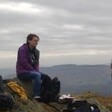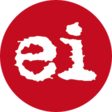Arts and Culture 29 October 2015

“Harvest” by Fouad Agbaria, 2014, oil on canvas, 150 x 200cm
Zawyeh GalleryNostalgia to the Light, an exhibition running at Ramallah’s Zawyeh Gallery, is the first solo West Bank show for Fouad Agbaria, a Palestinian painter from present-day Israel.
In a range of large-scale, vivid canvases, Agbaria offers a bucolic image of Palestine.
Agbaria’s home village of Musmus near Umm al-Fahm — a city in the Galilee region — provides the backdrop to his landscape paintings, which feature yellow wheat fields and images of harvest.
“My works utilize connotations and various techniques to help me in my search for precious early childhood memories,” Agbaria has said. ”My latest landscape paintings are an attempt to recall and revive those memories and experiences.”
Far from presenting a depoliticized image of Palestinian identity within Israel, Agbaria’s paintings also focus on the sabra, or prickly pear cactus – a “symbol of patience and survival” which has been appropriated by Israeli settlers since the early days of Zionism.
Agbaria has reappropriated the sabra as a potent Palestinian symbol and metaphor.
In another assertion of his Palestinian identity, Agbaria’s new works also experiment with Arabic script, using Palestinian poetry and Quranic verses to create sinuous, visually beautiful images.
Agbaria’s work with Arabic calligraphy starts with easily identifiable images but often leads into pictures which use abstraction and patterns to create works imbued with emotional and symbolic power.

Texture of “Sabra” by Fouad Agbaria, 2012, oil on canvas, 80 x 120cm
Zawyeh GalleryAgbaria, who is in his mid thirties, is described by Zawyeh as “one of the most prominent young Palestinian artists working today … part of an important and empowered group of young Palestinian artists who are continually redefining what it means to be Palestinian in historic Palestine.”
Agbaria had three solo exhibitions before the current one and his work has appeared in more than 20 group shows.
But, as many of the motifs and themes in his work suggest, as a Palestinian artist from within the present-day State of Israel, he occupies a complex and marginal space.
His paintings have featured in a high-profile auction of art from Israel at Bonhams in London, one of the world’s most famous art auction houses.
But another of his works, shown at the Museum on the Seam in Jerusalem, presents a challenging view of Palestinian identity in Israel.
“Worker, Israel, 2002” shows a seated Palestinian man. The text accompanying the image asks: “The chair upon which he is supposed to sit, is missing … What then is the significance we should attribute to the absence of background? Has the figure thereby forfeited the identity of its location? Or lost the authentic environment to which it wishes to belong? Is the loss of background simultaneously the loss of connection to a place and geography, or to economic and national security?”
Agbaria has also been involved in projects intended to raise the profile of the Palestinian population within present-day Israel such as the Umm el-Fahem Art Gallery and a 2010 pop-up gallery of Palestinian art in the port neighborhood of Jaffa – an area in which historic Palestinian homes have had their past erased by Israel.
Speaking about his home region, Agbaria has said: ”How much interest have you seen in the Arab sector of Umm al-Fahm, how often does the media cover artists, people and life there? But when there’s a fire, stone-throwing, a protest or a strike, they’re always there. The media is looking for fire and weapons and disorder.”
Nostalgia to the Light runs until 7 November.





